 Measles cases shot up last year and the year began with fresh outbreaks in several European cities. But the spread of these new cases is not uniform across the community, according to Marc Sprenger, Director of the European Centre for Disease Prevention and Control (ECDC).
Measles cases shot up last year and the year began with fresh outbreaks in several European cities. But the spread of these new cases is not uniform across the community, according to Marc Sprenger, Director of the European Centre for Disease Prevention and Control (ECDC).
Addressing the European Society of Clinical Microbiologists and Infectious Diseases at a conference in Prague, he said more must be done to engage with those for whom traditional media campaigns have proven ineffective.
Immunization rates are low
Looking at Sprenger’s presentation (slide 3), one thing that jumps out at is the spike in measles cases in 2010. The graph shows reported measles cases since 2005, with the numbers bobbing along between 3,000 and 8,000 – until last year when the figure leapt above 30,000.
And that was last year. As noted last month, 2011 kicked off with a spate of .
There was a surge in new cases in Danish adults at the beginning of the year, with public health authorities in Switzerland subsequently reporting a sudden increase. Norwegian authorities have also expressed concern at a spike in childhood measles reported in recent weeks.
Big chunks of northern Europe have sub-optimal vaccination coverage, according to the ECDC (see slides 4 & 5 of Sprenger’s presentation). The UK, France, Italy, Ireland, Austria and Belgium all have (one-dose) MMR immunization rates below 90%, according to EU stats, and experts say the second dose is often missed.
Hard-to-reach groups
While these figures are bad, national vaccination rates hide an even more disconcerting story: clusters of unvaccinated populations (see slide 6).
It’s bad news for if just 90% of people have been immunised – but what if the remaining 10% are concentrated in discrete pockets of the community?
Take the 2010 measles outbreak in Bulgaria as an example. 24,000 cases were reported – resulting in 21,000 hospitalisations and 25 deaths. These are shocking figures in an age where measles can be prevented.
But what is really stunning is that around 90% of these cases were among the Roma community.
This throws up the awkward challenge of reaching out to under-vaccinated populations where traditional public health promotion often falls short.
Targeted, culturally-sensitive engagement is required given that trust in public authorities may be weak and literacy levels are typically lower than in the wider population.
Getting down with the kids
Another hard-to-reach group is adolescents. Here, an entirely different kind of outreach is required (notwithstanding the fact that Roma teenagers were badly affected by the Bulgarian outbreak).
The ECDC says social media are central to speaking to younger people in a language they understand through a channel they use. YouTube, Twitter, Facebook all have to be part of the plan. The online community blog created as part of the WHO’s European Immunization Week is a great example of how this can be done. (And, of course, we @ Vaccines Today are doing our bit too!)
Medical advice for medics
Add to that the difficulties in getting through to doctors and other health workers – who often neglect to take their own advice when it comes to the seasonal flu vaccine – and the conclusion is clear: one-size-fits-all campaigns are not enough. Subgroups of the population must be targeted.
Resources:
A German perspective on rising measles rates in Europe (with video, English subtitles)




